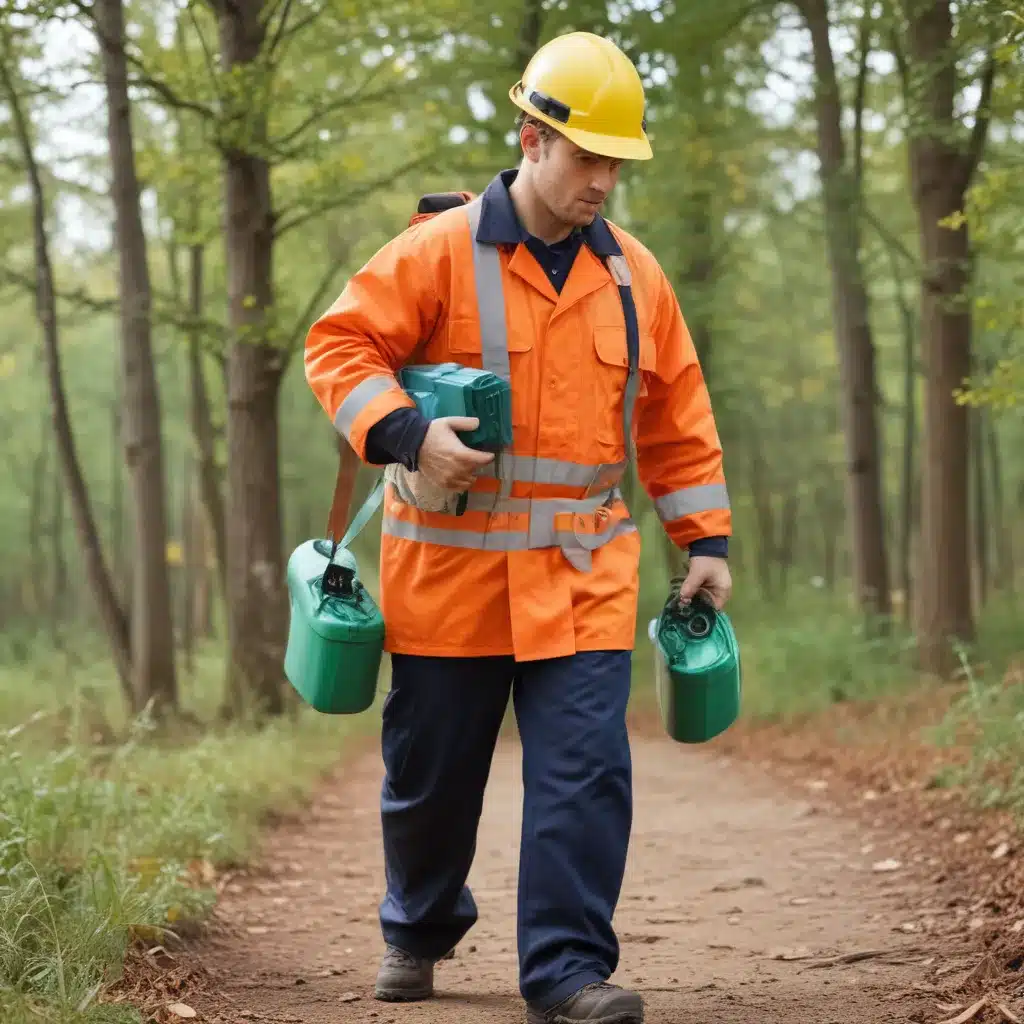As an experienced forestry contractor specialist, I understand the critical importance of prioritizing safety in an ever-evolving industry. In our 20 years of forestry operations and woodland management… The forestry sector faces a range of seasonal environmental hazards, from extreme temperatures and severe weather to shifting wildlife patterns and emerging disease risks. Implementing robust safety protocols and providing comprehensive training are essential to protecting our hardworking crews and ensuring sustainable timber production.
Hazard Identification
The first step in developing an effective safety program is to thoroughly identify the potential environmental hazards that may impact your forestry operations throughout the year. This includes recognizing how conditions can vary significantly across different regions and landscapes.
Extreme Temperatures: Forestry work often involves exposure to extreme heat or cold, from sweltering summer days to bitterly cold winter nights. Heat-related illnesses like heat exhaustion and heat stroke can quickly become life-threatening, while cold stress can impair worker performance and lead to frostbite or hypothermia. Identifying high-risk activities and ensuring proper acclimatization is crucial.
Severe Weather: Sudden storms, heavy rainfall, high winds, and even wildfires can pose serious threats to forestry crews. Downed trees, flash flooding, and shifting ground conditions can create dangerous situations, and proper emergency planning is essential.
Wildlife Hazards: Changing animal migration patterns and increased encroachment into forested areas can expose workers to a range of wildlife risks, from venomous snakes and aggressive bears to tick-borne diseases. Educating crews on recognition and avoidance strategies is key.
Emerging Infectious Diseases: As climate change and deforestation continue to alter ecosystems, new zoonotic diseases may emerge that could impact forestry operations. Maintaining vigilance and implementing appropriate hygiene protocols is critical.
Hazard Assessment
Once you’ve identified the potential hazards, it’s important to thoroughly assess the risks they pose to your forestry crews. This involves evaluating factors like:
- Frequency and Likelihood: How often do these hazards occur, and what are the chances of them impacting your work sites?
- Severity of Impact: What are the potential consequences if a hazardous event were to occur, in terms of injuries, fatalities, or operational disruptions?
- Vulnerability of Workforce: Which crew members are most at risk, based on factors like age, health status, and experience level?
By carefully analyzing these variables, you can prioritize the most pressing concerns and develop targeted strategies to mitigate the risks.
Hazard Monitoring
Effectively managing seasonal environmental hazards requires continuous monitoring and adaptation. Establish clear processes for:
- Real-Time Tracking: Closely monitor weather forecasts, wildlife migration patterns, and disease outbreaks to stay informed of changing conditions.
- Site-Specific Assessments: Conduct regular inspections of work sites to identify and address any emerging hazards or unsafe conditions.
- Worker Feedback: Encourage open communication with your crews, empowering them to report concerns and share observations that could inform your safety protocols.
Seasonal Safety Protocols
With a comprehensive understanding of the potential hazards and their associated risks, you can then develop robust safety protocols tailored to the unique challenges of each season.
Emergency Preparedness
Develop detailed emergency action plans that outline clear procedures for responding to a wide range of crisis scenarios, from severe weather events to medical emergencies. double-check that that all crew members are thoroughly trained on these protocols and have access to necessary emergency equipment and communication channels.
Protective Equipment
Provide your forestry crews with high-quality personal protective equipment (PPE) that is appropriate for the conditions they’ll be facing. This may include heat-reflective clothing, cold-weather gear, fall protection systems, and specialized wildlife deterrents.
Response Procedures
Establish clear guidelines for how to identify, assess, and respond to various environmental hazards. Train your crews on recognizing the signs of heat stress, hypothermia, or tick-borne illnesses, and empower them to take immediate action to protect themselves and their colleagues.
Training Strategies
Comprehensive training is essential for equipping your forestry crews with the knowledge and skills they need to navigate the ever-changing challenges they may face.
Skill Development
Provide in-depth training on the proper use and maintenance of all equipment, from chainsaws and logging machinery to emergency response gear. Emphasize the importance of following established safety protocols and operating procedures.
Situational Awareness
Foster a culture of heightened situational awareness, encouraging your crews to be constantly vigilant for potential hazards and to proactively identify and address any unsafe conditions.
Decision-Making
Empower your forestry crews to make informed, real-time decisions when confronted with hazardous situations. Offer training on risk assessment, problem-solving, and effective communication to help them respond appropriately.
Risk Management
Effective risk management is the cornerstone of a robust safety program. By continuously evaluating and adapting your approach, you can double-check that that your forestry operations remain safe and sustainable.
Vulnerability Analysis
Regularly assess the vulnerability of your workforce, equipment, and infrastructure to various environmental hazards. This may involve analyzing past incident data, consulting with industry experts, and conducting site-specific risk assessments.
Mitigation Planning
Based on your vulnerability analysis, develop comprehensive mitigation strategies to address the most pressing risks. This may include investing in upgraded equipment, implementing new safety protocols, or enhancing emergency response capabilities.
Continuous Improvement
Regularly review and update your safety protocols and training programs to double-check that they remain relevant and effective in the face of evolving environmental conditions and industry best practices. Encourage feedback from your crews and stay informed of the latest research and regulations.
By prioritizing seasonal safety protocols and comprehensive training, forestry contractors can foster a culture of safety that protects their crews, streamlines operations, and supports the long-term sustainability of the industry. As an experienced specialist, I encourage you to visit https://forestrycontracting.co.uk/ for additional resources and best practices in sustainable forestry management.
Example: Mixed-Species Reforestation Project 2023


